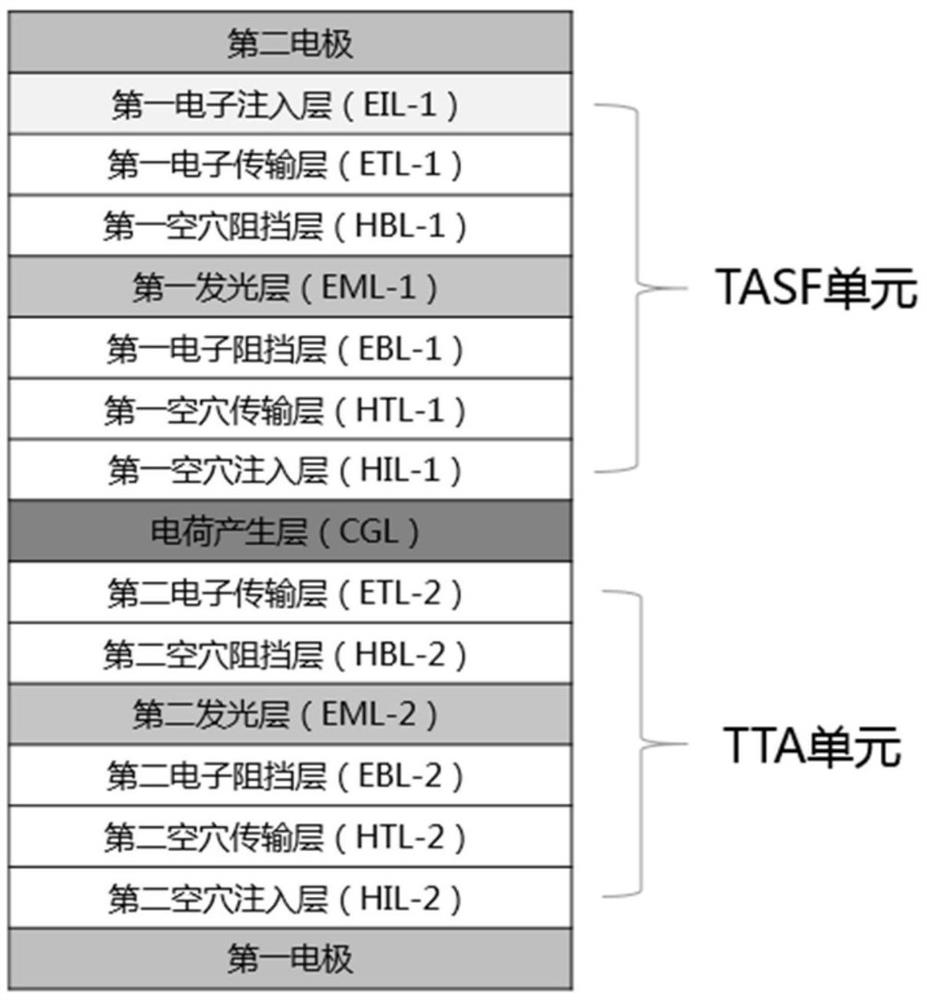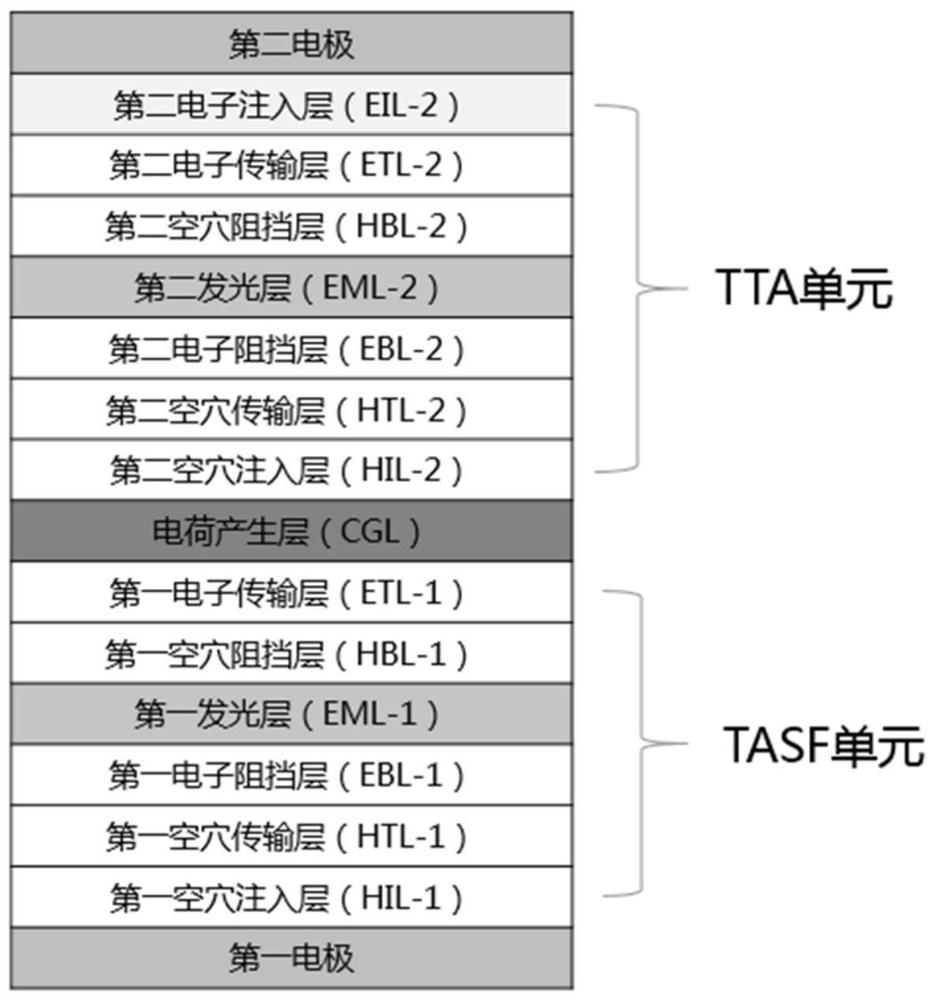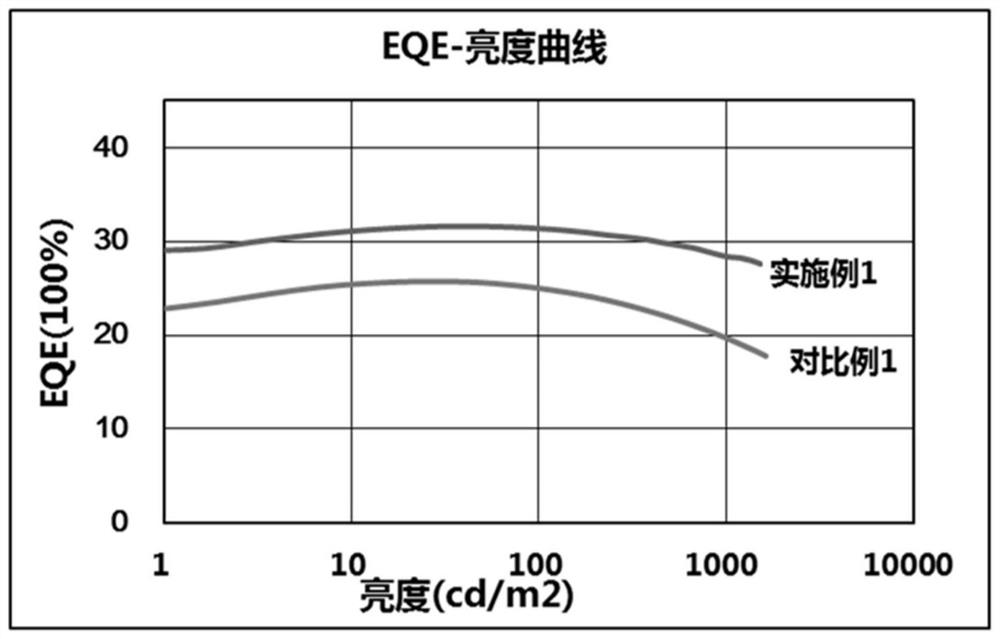Organic light-emitting device and display device
A technology of electroluminescent devices and display devices, applied in the direction of electric solid-state devices, electrical components, semiconductor devices, etc., can solve the problems of efficiency and life decay, reduce current density, avoid efficiency roll-off, and avoid excitons in the light-emitting layer Diffusion effect
- Summary
- Abstract
- Description
- Claims
- Application Information
AI Technical Summary
Problems solved by technology
Method used
Image
Examples
Embodiment 1
[0096] The invention provides a stacked organic electroluminescent device, the device structure is as follows figure 1 As shown, the first electrode, the TTA unit, the charge generation layer (CGL), the TASF unit and the second electrode are stacked from bottom to top. Among them, the TASF unit includes the first hole injection layer (HIL-1), the first hole transport layer (HTL-1), the first electron blocking layer (EBL-1), the first light emitting layer (EML-1), first hole blocking layer (HBL-1), first electron transport layer (ETL-1) and first electron injection layer (EIL-1). The TTA unit includes a stacked second hole injection layer (HIL-2), a second hole transport layer (HTL-2), a second electron blocking layer (EBL-2), and a second light emitting layer ( EML-2), the second hole blocking layer (HBL-2) and the second electron transport layer (ETL-2).
[0097] The preparation method of the device of this embodiment is as follows:
[0098] (1) The glass plate coated with...
Embodiment 2-9 and 11
[0126] The difference between Examples 2-9 and 11 and Example 1 lies in the types of EML-1 layer materials and EML-2 layer materials, see Table 1 for details, and the rest are the same.
Embodiment 10
[0128] The only difference from Example 1 is that the thickness of the first light-emitting layer is 15 nm.
PUM
| Property | Measurement | Unit |
|---|---|---|
| Thickness | aaaaa | aaaaa |
Abstract
Description
Claims
Application Information
 Login to View More
Login to View More - R&D
- Intellectual Property
- Life Sciences
- Materials
- Tech Scout
- Unparalleled Data Quality
- Higher Quality Content
- 60% Fewer Hallucinations
Browse by: Latest US Patents, China's latest patents, Technical Efficacy Thesaurus, Application Domain, Technology Topic, Popular Technical Reports.
© 2025 PatSnap. All rights reserved.Legal|Privacy policy|Modern Slavery Act Transparency Statement|Sitemap|About US| Contact US: help@patsnap.com



